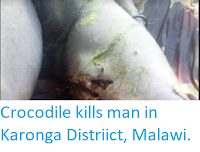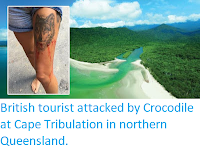Understanding predator-prey relationships is a key part of reconstructing past ecosystems, yet this is often difficult to do. The most reliable ways to do this are to find traces of prey items within the digestive tracts of fossilised predators, but such fossils are extremely rare, so palaeontologists often look for other evidence, such as preserved material within copralites (fossilised feces) or bite marks on bones or shells. Testudines (Turtles and Tortoises) have been around since the Triassic, and their fossils often show signs of feeding traces from predatory animals. Thus fossil Testudines are known with damage assigned to the actions of a number of different predators, from Dinosaurs to Badgers, while modern Testudines are known to be predated by a wide range of Mammals, Crododylians, Birds, Sharks, Fish and even Crabs.
In a paper published in the journal Royal Society Open Science on 24 January 2018, Torsten Scheyer of the Palaeontological Institute and Museum at the University of Zurich, Massimo Delfino of the Dipartimento di Scienze della Terra at the Università di Torino, and the Institut Català de Paleontologia Miquel Crusafont at the Universitat Autònoma de Barcelona, Nicole Klein of the Steinmann Institut für Geologie, Paläontologie und Mineralogie at the Universität Bonn, Nancy Bunbury and Frauke Fleischer-Dogley of the Seychelles Islands Foundation and Dennis Hansen of the Zoological Museum and the Department of Evolutionary Biology and Environmental Studies at the University of Zurich, describe a series of Crocodylian and Tortoise remains from around a Late Pleistocene pool on Aldabra Atol in the Seychelles, and infer a predator-prey relationship between them.
Aldabra is currently home to about 100 000 Giant Seychelles Tortoises, Aldabrachelys gigantea, a population that was almost wiped out by Human predation in the nineteenth century, but which, like the Giant Tortoises of the Galapagos Islands, is thought to be largely immune from non-Human predation on account of the size and heavy armour of the Tortoises. Scheyer et al. record the discovery of a large number of disarticulated Tortoise shell fragments from the Late Pleistocene of Aldabra Atoll, which appear to have come from animals identical to the modern population, and are therefore assumed to be the same species. Many of these fragments show round puncture marks, thought most likely to have been caused by the bite of a large Crocodylian, as they are inconsistent with bite marks made by any known Mammal species (and no large Mammals are known from the Pleistocene of the Seychelles) but similar to bite marks made by living Crocodiles.
Overview of new Giant Tortoise material fromthe Late Pleistocene of Aldabra Atoll. (a) Large nuchal still sutured to first left peripheral in dorsal and ventral view; (b) small nuchal in dorsal and ventral view, note cervical scute in both nuchals; (c) larger costal fragment in ventral view; (d) a smaller costal fragment with sulcus in dorsal and ventral view; (e) smaller hyo- or hypoplastron fragment in ventral and dorsal view; (f ) larger hyo- or hypoplastron fragment in ventral and dorsal view; (g) small shell fragment which might also pertain to a costal in purported dorsal view; (h–k) associated pelvic girdle elements; (h) distal part of an ilium in lateral and medial view; (i) fused pubes in angled anterodorsal view; (j) fused ischia in angled posterodorsal, angled posteroventral and posterior view; (k) fused pubes and ischia in natural articulated position in dorsal view. Scheyer et al. (2018).
Scheyer et al. also report the discovery of a number of Crocodile bones from the site. These are not assigned to a specific species due to their fragmentary nature, but are thought likely to have come from Aldabrachampsus dilophus, an extinct species previously described from Pleistocene deposits on the island. The original material assigned to Aldabrachampsus dilophus was from an animal estimated to have been about 2-2.5 m in length, and therefore unlikely to have been able to tackle Tortoises which themselves could exceed a meter in length, but the new material appears to have come from an animal as large as 3.7 m long, much more likely to have been capable of handling such prey. Scheyer et al. stop short of positively identifying Aldabrachampsus dilophus as the animal responsible for the attacks, however, as the islands are known to have previously been home to at least one other large Crocodylian, the Saltwater Crocodile, Crocodylus porosus, which was present in the Seychelles until wiped out by Human activity in the early nineteenth century.
Overview of new Crocodylian material from the Late Pleistocene of Aldabra Atoll. (a) Larger left dentary fragment with alveoli d3–d8 preserved in dorsal, medial and lateral view; (b) small left dentary fragment with alveoli d4–d6 preserved in dorsal and ventral view; (c) skull roof fragment consisting mainly of the left postorbital and partial frontal and parietal fragments in dorsal and ventral view; (d) dorsal procoelous vertebra with neural arch preserving the postzygapophyses in left lateral, right lateral and anterior view; (e) strongly eroded vertebral centrum still preserving the prezygapophyses in dorsal, ventral, right lateral and anterior view; (f ) isolated left prezygapophysis in dorsal view; (g) posterior half of osteoderm in dorsal, ventral and posterior view. Scheyer et al. (2018).
Scheyer et al. further note that all of the observed damage to Tortoise shell scutes (plates) is from the area around the front aperture of the shell, and that none of the shells show signs of having become disarticulated by any means other than natural decay. This indicates that the Crocodiles were using the front aperture of the shell to gain access to meat of the Tortoise, but that they were incapable of actually breaking open the shells.
The presence of Crocodylian bite marks around the front apertures of Giant Tortoise shells could indicate that the Crocodiles were ambushing the Tortoises at water holes, hiding beneath the water then seizing the Tortoises as they attempted to drink with their vulnerable heads and necks extended, which would be consistent with the hunting methods of modern Crocodiles.
However it cannot be ruled out that the Crocodiles were simply scavenging the bodies of Tortoises that had died for other reasons (also consistent with the behaviour of modern Crocodiles), and that they were concentrating this scavenging around the front aperture as this was the only way in which they could gain access to the meat of the Tortoises.
See also...
Size comparison of Crocodylian and Giant Tortoise remains. (a) Image and interpretative drawing of larger left dentary fragment; broken bone surface area indicated by grey patch) scaled and fitted to lower jaw of extant Crocodylus niloticus. In addition, the outline of right dentary fragment of Aldabrachampsus dilophus has been added for comparison; (b) image and interpretative drawing of skull roof fragment consisting of the postorbital (broken bone surface area indicated by grey patch), and frontal and parietal fragments scaled and fitted to skull of extant Crocodylus niloticus. For comparison, the outline of the right squamosal of Albadrachampsus dilophus; (c) dorsal and ventral sides of the larger nuchal with interpretative drawings of sutures and scute sulci superimposed. Note equidistance of some of the feeding traces (marked by white arrowheads connected by thin white stippled line), whichmight indicate repeated bites of the same Crocodylian jaw portion; (d) larger nuchal scaled to fit a large male Aldabrachelys gigantea with a headwidth of 95.1 mm and a curved carapace length of 114.4 cm. This specimen has a cervical scute width of about 30 mm, comparable to the maximum width of the same element in the fossil. ce, cervical scute;m1–2, marginal scute 1–2; d3–d10, dentary alveolus 1–10; df, dental foramina; f, frontal; n, nuchal; p, parietal; p1, first peripheral; po, postorbital, sq, squamosal, v1, first vertebral scute. Scheyer et al. (2018).
The presence of Crocodylian bite marks around the front apertures of Giant Tortoise shells could indicate that the Crocodiles were ambushing the Tortoises at water holes, hiding beneath the water then seizing the Tortoises as they attempted to drink with their vulnerable heads and necks extended, which would be consistent with the hunting methods of modern Crocodiles.
Possible Pleistocene trophic interaction scenario including Crocodylian and Giant Tortoise based on new fossil evidence. Hunting Crocodylian attracted by drinking Tortoise. The attack likely occurred frontally or fronto-laterally where the head, neck and soft tissue parts of the anterior shell aperture are exposed. Scheyer et al. (2018).
However it cannot be ruled out that the Crocodiles were simply scavenging the bodies of Tortoises that had died for other reasons (also consistent with the behaviour of modern Crocodiles), and that they were concentrating this scavenging around the front aperture as this was the only way in which they could gain access to the meat of the Tortoises.
Second possible Pleistocene trophic interaction scenario including Crocodylian and Giant Tortoise based on new fossil evidence. Decomposing tortoise carcass at breakdown stage 2 (putrid stage, with Dipterans and Ants) attracting scavenging Crocodylian and Coconut Crab. The spreading of the latter throughout the Indo-Pacific region has been proposed to have happened during the Pleistocene, and today this Crab is one of the most active decomposition agents on Aldabra Atoll. As in the previous scenario, the Crocodylian is hypothesised to approach the carcass from the front, at the point of easiest access to the viscera. Scheyer et al. (2018).
See also...
Follow Sciency Thoughts on Facebook.











